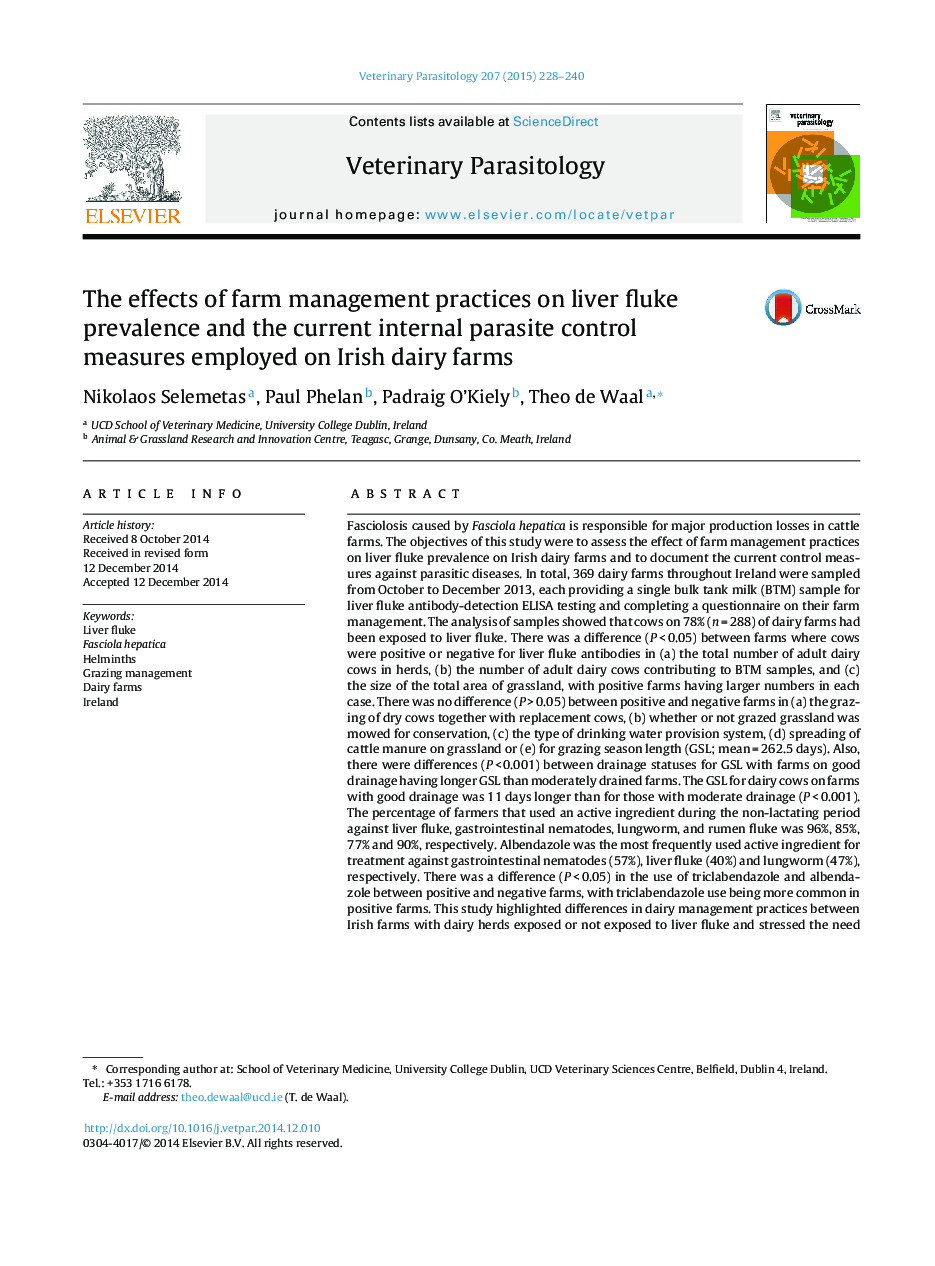| کد مقاله | کد نشریه | سال انتشار | مقاله انگلیسی | نسخه تمام متن |
|---|---|---|---|---|
| 5802589 | 1555676 | 2015 | 13 صفحه PDF | دانلود رایگان |
- 78% of dairy farms had been exposed to liver fluke.
- Farms on good drainage had longer grazing season length than moderately drained farms.
- There were major regional differences in dairy farm management and parasite control.
- Mapping liver fluke patterns at farm level can increase the accuracy of risk models.
- Comprehensive technical advice is important to farmers for effective dairy farm management.
Fasciolosis caused by Fasciola hepatica is responsible for major production losses in cattle farms. The objectives of this study were to assess the effect of farm management practices on liver fluke prevalence on Irish dairy farms and to document the current control measures against parasitic diseases. In total, 369 dairy farms throughout Ireland were sampled from October to December 2013, each providing a single bulk tank milk (BTM) sample for liver fluke antibody-detection ELISA testing and completing a questionnaire on their farm management. The analysis of samples showed that cows on 78% (n = 288) of dairy farms had been exposed to liver fluke. There was a difference (P < 0.05) between farms where cows were positive or negative for liver fluke antibodies in (a) the total number of adult dairy cows in herds, (b) the number of adult dairy cows contributing to BTM samples, and (c) the size of the total area of grassland, with positive farms having larger numbers in each case. There was no difference (P > 0.05) between positive and negative farms in (a) the grazing of dry cows together with replacement cows, (b) whether or not grazed grassland was mowed for conservation, (c) the type of drinking water provision system, (d) spreading of cattle manure on grassland or (e) for grazing season length (GSL; mean = 262.5 days). Also, there were differences (P < 0.001) between drainage statuses for GSL with farms on good drainage having longer GSL than moderately drained farms. The GSL for dairy cows on farms with good drainage was 11 days longer than for those with moderate drainage (P < 0.001). The percentage of farmers that used an active ingredient during the non-lactating period against liver fluke, gastrointestinal nematodes, lungworm, and rumen fluke was 96%, 85%, 77% and 90%, respectively. Albendazole was the most frequently used active ingredient for treatment against gastrointestinal nematodes (57%), liver fluke (40%) and lungworm (47%), respectively. There was a difference (P < 0.05) in the use of triclabendazole and albendazole between positive and negative farms, with triclabendazole use being more common in positive farms. This study highlighted differences in dairy management practices between Irish farms with dairy herds exposed or not exposed to liver fluke and stressed the need of fine-scale mapping of the disease patterns even at farm level to increase the accuracy of risk models. Also, comprehensive advice and professional support services to farmers on appropriate farm management practices are very important for an effective anthelmintic control strategy.
Journal: Veterinary Parasitology - Volume 207, Issues 3â4, 30 January 2015, Pages 228-240
